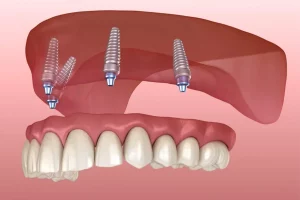If you have spent any time scrolling through wellness blogs or social media, you have probably seen someone promoting oil pulling. The claim sounds almost magical: swish a spoon of oil in your mouth every morning, and you will have whiter teeth, fresher breath, better health, and even a detoxified body. Tempting, right?
But here is the reality. Oil pulling can complement your oral hygiene routine, but it cannot replace brushing and flossing. It has its merits, but it also has clear limitations. Let’s break down the history, science, and the truth behind this ancient practice in plain, evidence-based language.
The Ancient Roots of a Modern Trend
Oil pulling is not a recent discovery. It dates back thousands of years to Ayurveda, the traditional system of medicine in India that focuses on daily health rituals, known as dinacharya. Two main techniques were described in ancient texts:
- Gandusha, which involves holding oil in the mouth without moving it.
- Kavala, which means swishing or gargling oil around the mouth.
Both practices were intended to support oral and facial health, improve digestion, and strengthen the jaw and throat.
The modern version of oil pulling gained attention in the 1990s when Dr. F. Karach, a Ukrainian physician, promoted it as a remedy for chronic diseases such as arthritis and migraines. That claim was never backed by evidence, but it made the practice famous in natural health circles worldwide.
How Oil Pulling Works
The concept is fairly simple. The oil acts as a cleansing agent. It binds to fat-soluble debris and bacteria in the mouth. When you spit out the oil, you remove some of that bacterial load. Some researchers believe a mild chemical reaction called saponification occurs, meaning the oil slightly emulsifies with saliva and acts a bit like soap.
It is not a deep detox, but it does have some modest cleaning power.
Separating the Myths from the Facts
Oil pulling has been surrounded by hype. Many people swear by it, while others dismiss it entirely. The truth lies somewhere in between. Here is what science actually says.
| Claimed Benefit | Verdict | Reality |
| Replaces brushing and flossing | Myth | It cannot replace mechanical cleaning. You still need your toothbrush and floss. |
| Detoxifies the body | Myth | Your liver and kidneys handle detoxification. Oil in your mouth cannot pull toxins from your bloodstream. |
| Whitens teeth instantly | Myth | It may remove surface stains, but it will not bleach enamel. |
| Cures chronic diseases | Myth | No scientific proof supports these claims. |
| Endorsed by dental authorities | Myth | The American Dental Association does not recommend it due to limited evidence. |
Oil pulling has some benefits, but it is not a miracle.
The Real, Evidence-Based Benefits
When used correctly and consistently, oil pulling can support oral health in specific ways.
Reduces Harmful Bacteria
Several studies have shown that oil pulling can reduce the levels of Streptococcus mutans, the main bacterium responsible for plaque and tooth decay. Coconut oil, in particular, contains lauric acid, which has strong antibacterial and antifungal properties. Regular use can lower bacterial counts, improving overall oral hygiene.
Helps with Gum Health and Inflammation
Oil pulling may help reduce gum inflammation and bleeding in cases of mild gingivitis. Some studies found results similar to chlorhexidine mouthwash, a common prescription rinse, without side effects like staining or taste changes. The gentle swishing also increases blood flow to gum tissues, which may promote healing.
Freshens Breath Naturally
Bad breath is often caused by bacteria that produce sulfur compounds. Oil pulling reduces these bacteria, improving breath freshness. Coconut oil’s moisturizing quality also helps relieve dry mouth, which can otherwise worsen odor. For people sensitive to alcohol-based mouthwashes, oil pulling offers a milder alternative.
Gentle on Oral Tissues
Unlike some mouthwashes that cause dryness or irritation, oil pulling is soothing. The oils lubricate the tissues, which may benefit people with mouth ulcers, burning sensations, or post-dental sensitivity. It is safe, inexpensive, and chemical-free when done correctly.
How to Do It the Right Way
If you decide to try oil pulling, technique matters. Done wrong, it can cause jaw strain or mess up your plumbing.
Choose a Quality Oil
Always use organic, cold-pressed, edible oil.
- Coconut oil is the most popular option. It tastes pleasant and contains lauric acid, a natural antimicrobial.
- Sesame oil is the classic Ayurvedic choice, rich in antioxidants.
- Sunflower or olive oil are acceptable alternatives.
Avoid refined or industrial seed oils, as they lack beneficial compounds. If you are allergic to coconut or sesame, choose MCT oil, which is light and flavorless.
The Step-by-Step Routine
- Time it right. Do it first thing in the morning before eating, drinking, or brushing.
- Use the right amount. Start with a teaspoon and gradually increase to a tablespoon.
- Swish gently. Move the oil between your teeth and around your mouth for 5 to 10 minutes. Do not swallow it.
- Spit it properly. Always spit into the trash, not the sink. Coconut oil solidifies and can clog pipes.
- Rinse and brush. Rinse with warm water and then brush your teeth as usual.
If your jaw hurts or feels tired, reduce the time or intensity. You are not supposed to treat it like an arm workout.
Possible Risks and Things to Watch
Oil pulling is generally safe, but it is not risk-free.
- Jaw strain: Overly vigorous or long sessions can cause pain, especially for people with TMJ issues.
- Aspiration risk: Accidentally inhaling oil can lead to lipoid pneumonia. It is rare but serious. Never let small children do it.
- Upset stomach: Swallowing the used oil may cause nausea or discomfort since it contains bacteria and toxins.
- Dental work concerns: A few reports suggest oil pulling might loosen old fillings. If you have crowns or multiple restorations, be gentle and check with your dentist before starting.
Used responsibly, the risks are minimal.
Where Oil Pulling Fits in Modern Oral Care
Oil pulling can be a pleasant and natural complement to brushing and flossing. It offers mild antibacterial action, helps with bad breath, and may improve gum comfort. But it is not a replacement for the essentials.
Brushing twice daily with fluoride toothpaste, flossing once a day, and regular dental visits remain the gold standard for oral health. Oil pulling is an optional extra, not the foundation.
Think of it as adding a conditioner after shampooing your hair. It enhances the result but does not do the cleaning.
If you enjoy rituals and like a holistic approach, oil pulling can be a satisfying habit. Just keep your expectations realistic. You are not detoxing your organs or curing diseases, you are simply improving the environment inside your mouth in a natural, gentle way.
Try it, observe how your mouth feels, and let your dentist know what you are doing. The right balance between tradition and science often gives the best results.
At the end of the day, a tablespoon of oil will never replace a toothbrush, but it can be a small step toward a cleaner, healthier smile.
Takeaway
Oil pulling can support your oral health, but it’s no substitute for brushing, flossing, or professional care. It may help reduce bacteria, soothe gums, and freshen breath when used as an add-on to your daily routine. For lasting results and expert guidance, maintain proper oral hygiene and schedule regular dental visits.
Contact Oris Dental Center in Dubai for your routine dental checkup or advanced dental care. Our experienced team provides personalized, evidence-based treatments to keep your smile healthy, confident, and bright. Call us today to book your appointment and experience exceptional dental services in Dubai.





